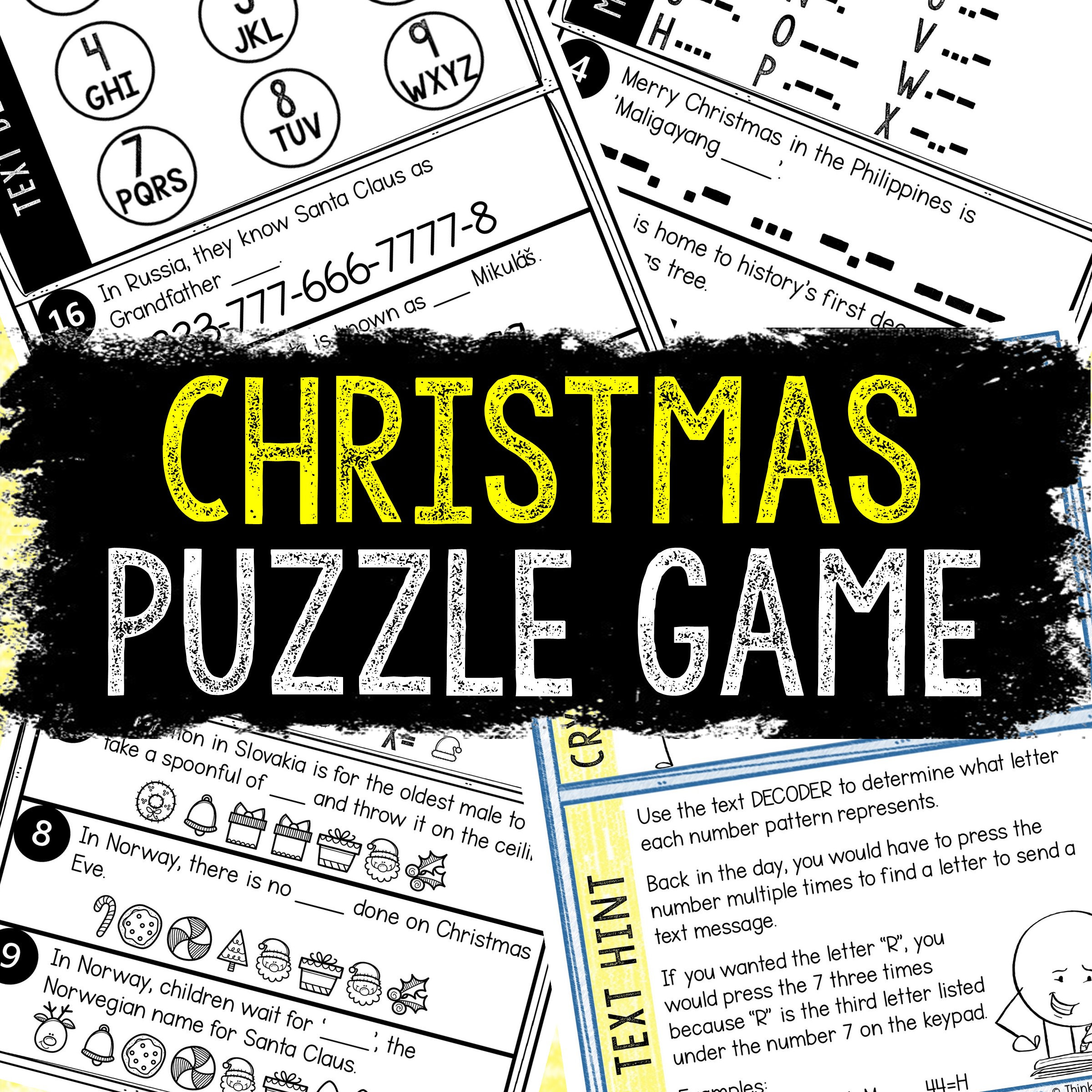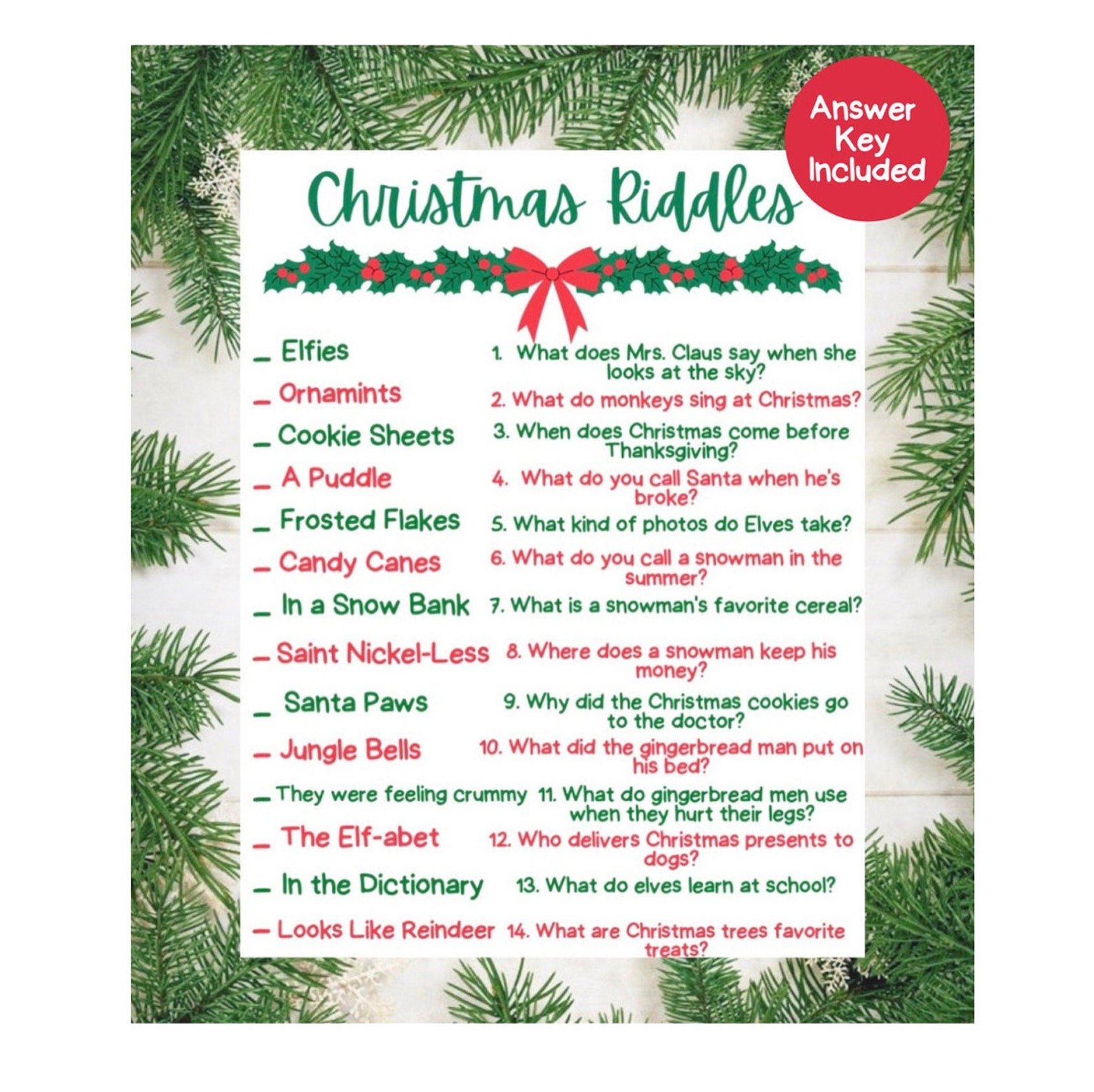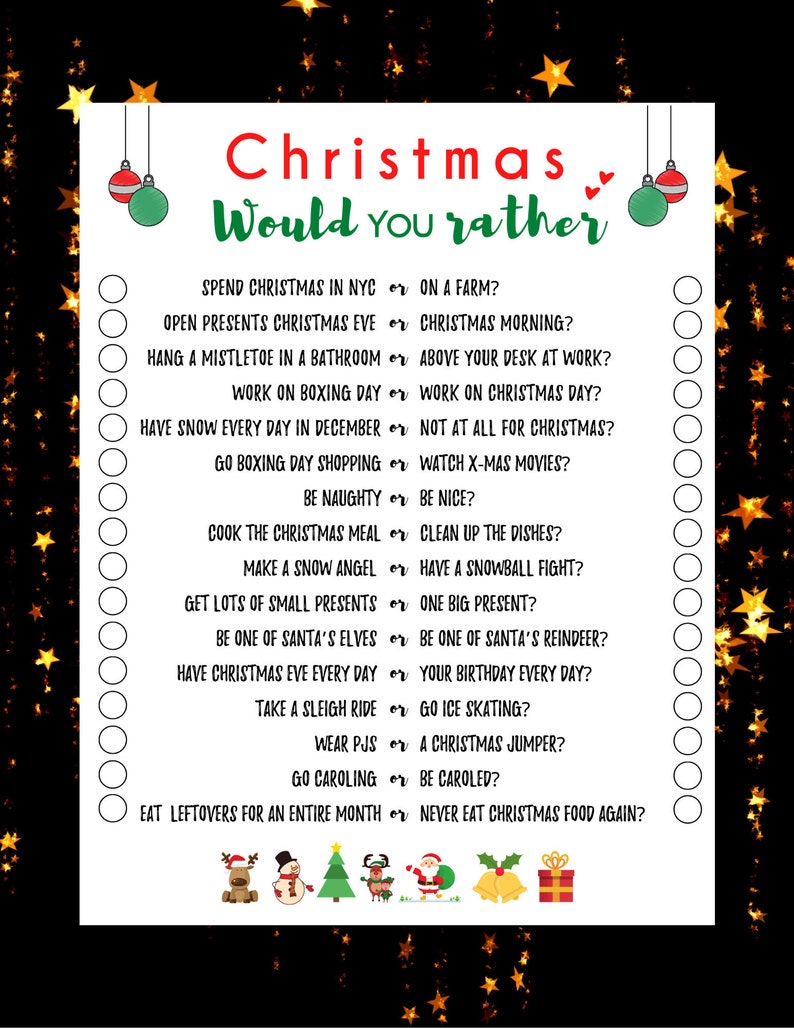Unwrapping the Joy of Christmas Riddles: Engaging Children Through Festive Puzzles
Related Articles: Unwrapping the Joy of Christmas Riddles: Engaging Children Through Festive Puzzles
Introduction
With great pleasure, we will explore the intriguing topic related to Unwrapping the Joy of Christmas Riddles: Engaging Children Through Festive Puzzles. Let’s weave interesting information and offer fresh perspectives to the readers.
Table of Content
Unwrapping the Joy of Christmas Riddles: Engaging Children Through Festive Puzzles

Christmas is a time for celebration, joy, and family gatherings. Amidst the festive cheer, incorporating activities that stimulate young minds can enhance the holiday experience. Christmas riddles, with their playful nature and engaging challenges, offer a unique way to entertain children while fostering their cognitive skills.
The Essence of Christmas Riddles
Christmas riddles are essentially word puzzles that revolve around themes and elements associated with the holiday season. They present a descriptive clue or a playful statement, requiring the solver to decipher the answer based on their knowledge and understanding of Christmas traditions, symbols, and characters.
Benefits of Christmas Riddles for Children
Engaging children in Christmas riddles offers a multitude of cognitive and developmental benefits:
- Enhanced Vocabulary and Language Skills: Riddles introduce children to new words, phrases, and concepts related to Christmas, expanding their vocabulary and improving their language comprehension.
- Critical Thinking and Problem-Solving: Deciphering riddles encourages children to think critically, analyze clues, and develop logical reasoning skills. They learn to identify patterns, make connections, and arrive at solutions.
- Memory and Recall: Riddles often require remembering specific details, facts, or stories associated with Christmas, strengthening memory and recall abilities.
- Imagination and Creativity: The playful nature of riddles stimulates imagination and encourages children to think outside the box, coming up with creative solutions and interpretations.
- Fun and Engaging Learning: Riddles offer a fun and interactive way for children to learn about Christmas traditions, history, and cultural significance. This playful approach makes learning enjoyable and memorable.
- Social Interaction and Bonding: Riddles can be a great tool for family bonding and social interaction. Sharing riddles, discussing clues, and celebrating solutions creates a shared experience and fosters a sense of community.
Types of Christmas Riddles for Children
Christmas riddles cater to diverse age groups and interests, ranging from simple and straightforward to more complex and challenging. Here are some common types:
- Object Riddles: These riddles focus on identifying Christmas objects, like ornaments, decorations, or gifts. For example, "I hang on the tree and sparkle brightly. What am I?" (Answer: An ornament)
- Character Riddles: These riddles describe Christmas characters, such as Santa Claus, elves, or reindeer. For instance, "I live at the North Pole and deliver presents. Who am I?" (Answer: Santa Claus)
- Tradition Riddles: These riddles focus on Christmas traditions, like decorating the tree, singing carols, or opening presents. For example, "What do you do on Christmas Eve after dinner?" (Answer: Open presents)
- Story Riddles: These riddles draw from popular Christmas stories, like "The Night Before Christmas" or "A Christmas Carol." For instance, "I flew through the air with my eight tiny reindeer. Who am I?" (Answer: Santa Claus)
Examples of Christmas Riddles with Answers
Here are some examples of Christmas riddles for children, categorized by type:
Object Riddles:
-
Riddle: I am covered in snow and have a carrot nose. What am I?
- Answer: A snowman
-
Riddle: I am hung on a tree and have many colorful lights. What am I?
- Answer: A Christmas tree
-
Riddle: I am a sweet treat that is often shaped like a candy cane. What am I?
- Answer: A gingerbread man
Character Riddles:
-
Riddle: I have a long white beard and a jolly laugh. Who am I?
- Answer: Santa Claus
-
Riddle: I live at the North Pole and help Santa make toys. Who am I?
- Answer: An elf
-
Riddle: I am a reindeer with a shiny red nose. Who am I?
- Answer: Rudolph
Tradition Riddles:
-
Riddle: What do you put on top of a Christmas tree?
- Answer: A star
-
Riddle: What do you sing on Christmas Eve?
- Answer: Christmas carols
-
Riddle: What do you do on Christmas morning?
- Answer: Open presents
Story Riddles:
-
Riddle: I am a ghost who is visited by three spirits on Christmas Eve. Who am I?
- Answer: Ebenezer Scrooge
-
Riddle: I am a small mouse who befriends a nutcracker. Who am I?
- Answer: Marie
Creating Your Own Christmas Riddles
Encouraging children to create their own Christmas riddles can be a fun and engaging activity. Encourage them to:
- Choose a Christmas theme: They can focus on an object, character, tradition, or story.
- Write a descriptive clue: The clue should be challenging but not too difficult.
- Include a wordplay element: Using rhymes, puns, or metaphors can make the riddle more enjoyable.
- Test it out: Have them try their riddle on others to see if it is solvable.
FAQs about Christmas Riddles for Kids
Q: What is the best age for children to start solving Christmas riddles?
A: Children as young as preschool age can enjoy simple Christmas riddles. The complexity of the riddles can be adjusted to match the child’s developmental stage and cognitive abilities.
Q: How can I make Christmas riddles more engaging for children?
A: Incorporate visual aids, such as pictures or objects, to illustrate the clues. Engage them in a playful tone and encourage them to think aloud as they solve the riddles.
Q: What are some tips for creating effective Christmas riddles?
A: Keep the clues concise and avoid being too obvious. Use language that is appropriate for the child’s age and vocabulary level. Include a sense of humor or wordplay to make the riddle more engaging.
Conclusion
Christmas riddles provide a fun and educational way for children to engage with the holiday season. They stimulate critical thinking, enhance vocabulary, and foster a love of language and learning. By incorporating these festive puzzles into holiday celebrations, families can create lasting memories while nurturing the minds of the next generation.








Closure
Thus, we hope this article has provided valuable insights into Unwrapping the Joy of Christmas Riddles: Engaging Children Through Festive Puzzles. We thank you for taking the time to read this article. See you in our next article!